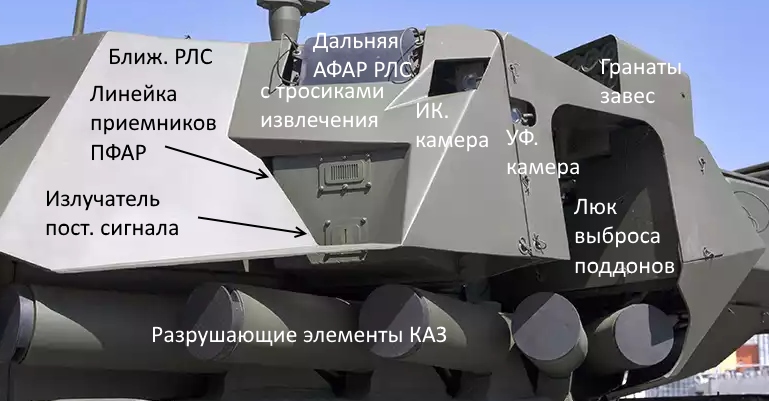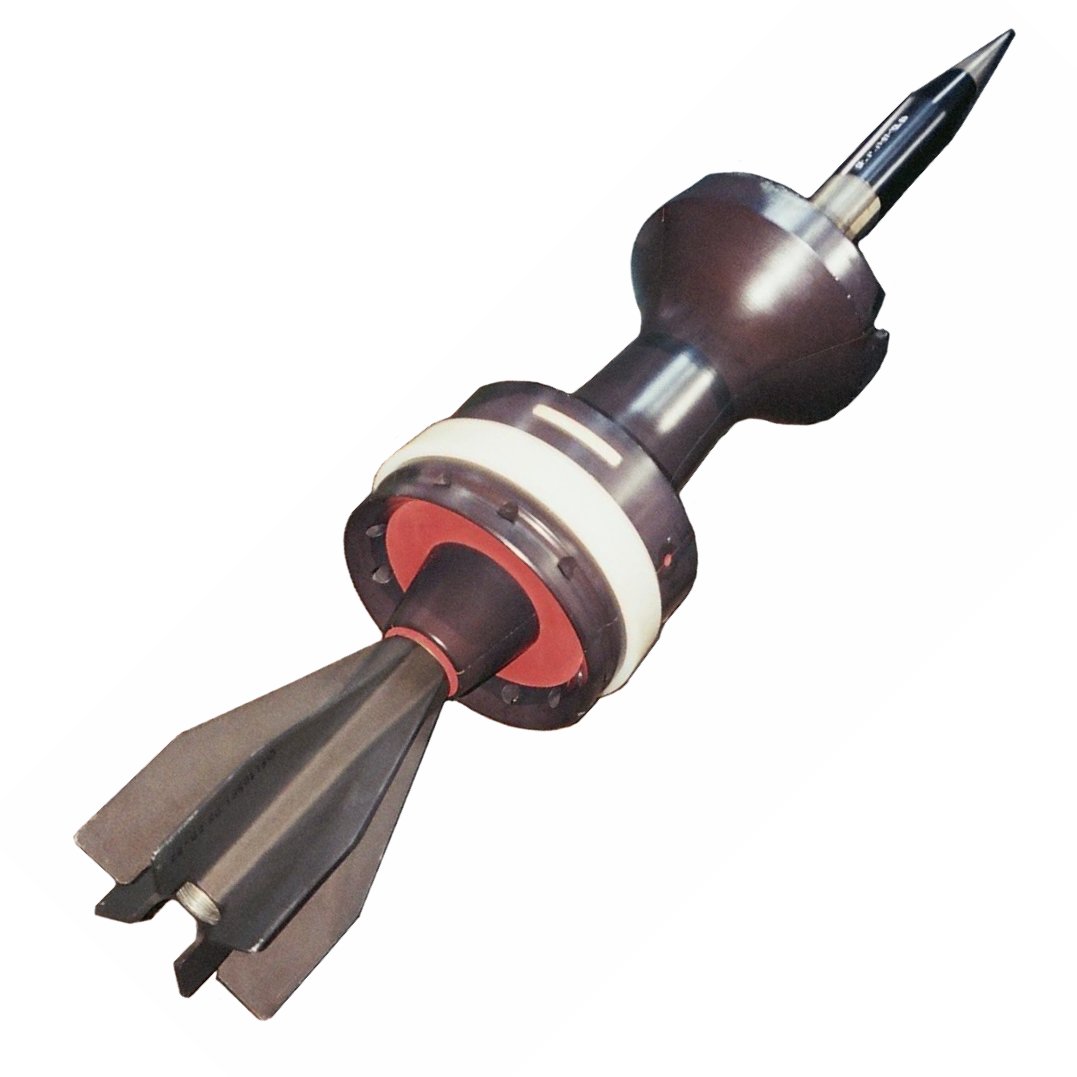|
Afganit
Afganit (Russian: Афганит, lit. 'Afghanite') is a Russian active protection system (APS) employed on modern Russian Armata Universal Combat Platform, Armata family of vehicles. It is intended to supersede the Arena (countermeasure), Arena APS and utilises radar and electro-optical sensors in the ultraviolet and infrared bands. The millimeter-wavelength radar detects and tracks incoming anti-tank warfare, anti-tank munitions. The system can reportedly intercept armour-piercing fin-stabilized discarding sabot kinetic energy penetrators in addition to high-explosive anti-tank (HEAT) munitions. Currently, the maximum speed that can be intercepted is , with projected future increases of up to . According to news sources, it protects the tank from all sides. References {{APS Armoured fighting vehicle equipment Weapons countermeasures ... [...More Info...] [...Related Items...] OR: [Wikipedia] [Google] [Baidu] |
Active Protection System
An active protection system is a system designed to actively prevent certain anti-tank weapons from destroying a vehicle. Countermeasures that either conceal the vehicle from, or disrupt the guidance of an incoming guided missile threat are designated soft-kill active protection measures. Countermeasures that physically strike an incoming threat to damage or destroy it and thereby limit its ability to penetrate armor are designated hard-kill active protection measures. Soft-kill measures Soft-kill measures are designed to defeat guided weapons either by concealing the protected vehicle from them (for example, with a smoke screen) or by disrupting their guidance with radiation (for example, with a dazzler). Some systems use laser dazzlers to blind the operator or sensors of semi-automatic command to line of sight (SACLOS) anti-tank guided missiles (ATGMs), such as the JD-3 of the Type 99 tank. Others use powerful infrared emitters to mask the IR tracking flare present on many ... [...More Info...] [...Related Items...] OR: [Wikipedia] [Google] [Baidu] |
Armata Universal Combat Platform
The "Armata" Universal Combat Platform (russian: Армата) is a Russian advanced next generation modular heavy military tracked vehicle platform. The Armata platform is the basis of the T-14 (a main battle tank), the T-15 (a heavy infantry fighting vehicle), a combat engineering vehicle, an armoured recovery vehicle, a heavy armoured personnel carrier, a tank support combat vehicle, and several types of self-propelled artillery, including the 2S35 Koalitsiya-SV under the same codename based on the same chassis. It is also intended to serve as the basis for artillery, air defense, and NBC defense systems. The new "Armata" tank platform is meant to replace the older Russian main battle tanks and APCs that are currently used by the Russian military. Origin of designation The combat platform is formally designated as "prospective family of heavy unified battlefield platforms". The name "Armata" derives from the plural of the Latin word which refers to weapons of war, and was an ... [...More Info...] [...Related Items...] OR: [Wikipedia] [Google] [Baidu] |
Arena (countermeasure)
Arena (russian: Арена) is an active protection system (APS) developed at Russia's Kolomna-based Engineering Design Bureau for the purpose of protecting armoured fighting vehicles from destruction by light anti-tank weapons, anti-tank guided missiles (ATGM), and missiles with top attack warheads. It uses a Doppler radar to detect incoming warheads. Upon detection, a defensive rocket is fired that detonates near the inbound threat, destroying it before it hits the vehicle. ''Arena'' is the successor to ''Drozd'', a Soviet active protection system from the late 1970s, which was installed on several T-55s during the Soviet–Afghan War. The system improved the vehicle's survivability rate, increasing it by up to 80%. ''Drozd'' was followed by ''Shtora'' in the late 1980s, which used an electro-optical dazzlers or expendable so (smoke/IR smoke) to confuse the seeker head or defeat the user. In late 1994 the Russian Army deployed many armoured fighting vehicles to Chechnya, where th ... [...More Info...] [...Related Items...] OR: [Wikipedia] [Google] [Baidu] |
Radar
Radar is a detection system that uses radio waves to determine the distance ('' ranging''), angle, and radial velocity of objects relative to the site. It can be used to detect aircraft, ships, spacecraft, guided missiles, motor vehicles, weather formations, and terrain. A radar system consists of a transmitter producing electromagnetic waves in the radio or microwaves domain, a transmitting antenna, a receiving antenna (often the same antenna is used for transmitting and receiving) and a receiver and processor to determine properties of the objects. Radio waves (pulsed or continuous) from the transmitter reflect off the objects and return to the receiver, giving information about the objects' locations and speeds. Radar was developed secretly for military use by several countries in the period before and during World War II. A key development was the cavity magnetron in the United Kingdom, which allowed the creation of relatively small systems with sub-meter resolution ... [...More Info...] [...Related Items...] OR: [Wikipedia] [Google] [Baidu] |
Electro-optical Sensor
Electro-optical sensors are electronic detectors that convert light, or a change in light, into an electronic signal. These sensors are able to detect electromagnetic radiation from the infrared up to the ultraviolet wavelengths. They are used in many industrial and consumer applications, for example: * Lamps that turn on automatically in response to darkness * Position sensors that activate when an object interrupts a light beam * Flash detection, to synchronize one photographic flash to another * Photoelectric sensors that detect the distance, absence, or presence of an object Function An optical sensor converts light rays into electronic signals. It measures the physical quantity of light and then translates it into a form that is readable by an instrument. An optical sensor is generally part of a larger system that integrates a source of light, a measuring device and the optical sensor. This is often connected to an electrical trigger. The trigger reacts to a change in th ... [...More Info...] [...Related Items...] OR: [Wikipedia] [Google] [Baidu] |
Anti-tank Warfare
Anti-tank warfare originated from the need to develop technology and tactics to destroy tanks during World War I. Since the Triple Entente deployed the first tanks in 1916, the German Empire developed the first anti-tank weapons. The first developed anti-tank weapon was a scaled-up bolt-action rifle, the Mauser 1918 T-Gewehr, that fired a 13mm cartridge with a solid bullet that could penetrate the thin armor of tanks of the time and destroy the engine or ricochet inside, killing occupants. Because tanks represent an enemy's strong force projection on land, military strategists have incorporated anti-tank warfare into the doctrine of nearly every combat service since. The most predominant anti-tank weapons at the start of World War II in 1939 included the tank-mounted gun, anti-tank guns and anti-tank grenades used by the infantry, and ground-attack aircraft. Anti-tank warfare evolved rapidly during World War II, leading to the inclusion of infantry-portable weapons su ... [...More Info...] [...Related Items...] OR: [Wikipedia] [Google] [Baidu] |
Armour-piercing Fin-stabilized Discarding Sabot
Armour-piercing fin-stabilized discarding sabot (APFSDS), long dart penetrator, or simply dart ammunition, is a type of kinetic energy penetrator ammunition used to attack modern vehicle armour. As an armament for main battle tanks, it succeeds Armour-Piercing Discarding Sabot (APDS) ammunition, which is still used in small or medium caliber weapon systems. Improvements in powerful automotive propulsion and suspension systems following World War II allowed modern main battle tanks to incorporate progressively thicker and heavier armour protection systems, while maintaining considerable maneuverability and speed on the battlefield. As a result, achieving deep armour penetration with gun-fired ammunition required even longer anti-armour projectiles fired at even higher muzzle velocity than could be achieved with stubbier APDS projectiles. History Armour-piercing discarding sabot (APDS) was initially the main design of the kinetic energy (KE) penetrator. The logical progressio ... [...More Info...] [...Related Items...] OR: [Wikipedia] [Google] [Baidu] |
Kinetic Energy Penetrator
A kinetic energy penetrator (KEP), also known as long-rod penetrator (LRP), is a type of ammunition designed to penetrate vehicle armour using a flechette-like, high-sectional density projectile. Like a bullet or kinetic energy weapon, this type of ammunition does not contain explosive payloads and uses purely kinetic energy to penetrate the target. Modern KEP munitions are typically of the armour-piercing fin-stabilized discarding sabot (APFSDS) type. History Early cannons fired kinetic energy ammunition, initially consisting of heavy balls of worked stone and later of dense metals. From the beginning, combining high muzzle energy with projectile weight and hardness have been the foremost factors in the design of such weapons. Similarly, the foremost purpose of such weapons has generally been to defeat protective shells of armored vehicles or other defensive structures, whether it is stone walls, sailship timbers, or modern tank armour. Kinetic energy ammunition, in its ... [...More Info...] [...Related Items...] OR: [Wikipedia] [Google] [Baidu] |
High-explosive Anti-tank
High-explosive anti-tank (HEAT) is the effect of a shaped charge explosive that uses the Munroe effect to penetrate heavy armor. The warhead functions by having an explosive charge collapse a metal liner inside the warhead into a high-velocity explosively formed penetrator (EFP) jet; this is capable of penetrating armor steel to a depth of seven or more times the diameter of the charge (charge diameters, CD). The EFPs jet effect is purely kinetic in nature; the round has no explosive or incendiary effect on the target. Because they rely on the kinetic energy of the EFP jet for their penetration performance, HEAT warheads do not have to be delivered with high velocity, as an armor-piercing round does. Thus they generate less recoil. The performance of HEAT weapons has nothing to do with thermal effects, with HEAT being simply an acronym. History HEAT warheads were developed during World War II, from extensive research and development into shaped charge warheads. Shaped c ... [...More Info...] [...Related Items...] OR: [Wikipedia] [Google] [Baidu] |
Armoured Fighting Vehicle Equipment
Armour (British English) or armor (American English; see spelling differences) is a covering used to protect an object, individual, or vehicle from physical injury or damage, especially direct contact weapons or projectiles during combat, or from a potentially dangerous environment or activity (e.g. cycling, construction sites, etc.). Personal armour is used to protect soldiers and war animals. Vehicle armour is used on warships, armoured fighting vehicles, and some mostly ground attack combat aircraft. A second use of the term ''armour'' describes armoured forces, armoured weapons, and their role in combat. After the development of armoured warfare, tanks and mechanised infantry and their combat formations came to be referred to collectively as "armour". Etymology The word "armour" began to appear in the Middle Ages as a derivative of Old French. It is dated from 1297 as a "mail, defensive covering worn in combat". The word originates from the Old French , itself deriv ... [...More Info...] [...Related Items...] OR: [Wikipedia] [Google] [Baidu] |








.jpg)